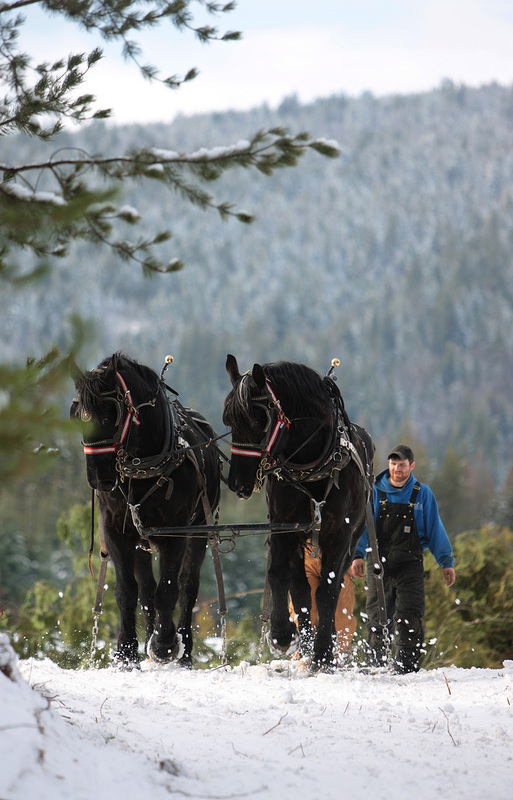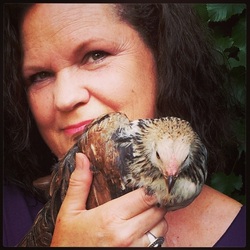Why I Think This is the Best Essential Oil Company: From a Humble Chemist
There are some posts out there on the web about essential oil companies that are tripping people up. I'd like to share my perspective.
I come at essential oils from a technical background. I have a bachelor's degree in Chemistry and a master's degree in Materials and Metallurgical Engineering. For three years, I worked for the government in microelectronics research and development at a National Laboratory and for another three years, I worked for a government contractor that maintains our nation’s stockpile. So, needless to say, I haven't been versed in the nuances of essential oil chemistry, but I follow it easily. I am familiar with the equipment used and some of the science behind discovering the most therapeutic oils.
My search for the best essential oil started November 2012. I was making homemade chapstick and lotion for my friends and family. I read the label on a bottle of store-bought lavender, before I added it to the mixture, and it said EXTERNAL USE ONLY. That’s when I froze. EXTERNAL USE? The skin is the largest organ. You can’t put ANYTHING on your skin and expect it to stay external. If you put it on your skin, it gets absorbed. Your liver has to process what ever oil, water, or toxins you just introduced. The whole point of making beauty products in my kitchen was to make them safe enough to eat.
My two criteria when looking at essential oils were 1) is there enough proof that ingestion is safe and 2) will it contribute to physical and mental well being?
I'm going to dig deep into a company here that has not received enough credit on the web. Other essential oil companies may do parts of what this company does, but NO other company does everything.
This company owns and operates NINE GLOBAL FARMS and distilleries all over the world. Growing healthy plants starts with the soil, chemistry, and nutritional needs of the plants. If a company doesn’t understand that, they will produce a subpar plant and thus, a subpar essential oil. Geographic location, soil type, climate, elevation, humidity, temperature, sunlight, frost-free days, rainfall, and many other elements determine the health and growth of plants. In other words, what you should take from this is that even before you plant the seed, you must evaluate a location and it’s soil.
Seed evaluation is key too. What seed species produce the most therapeutic oil? Remember, I don’t want just any oil. I want one that will not only be safe to ingest but contribute to health. What is the origin of the seed? Did it come from commercially grown plants that were babied and kept in a controlled environment or did it come from a seed produced by a plant that experienced the harshness of nature? A plant that thrived in the elements has a strong immune system whose qualities are passed on to the oil molecules (1). This company nourishes the soil and uses seeds from plants that have been grown outside.
Composting is a key element to organic farming. It is practiced on this company’s farms. It’s nice to know that the plants that supply my oils are treated with the same love and respect that I treat my homegrown food. They utilize millions of California red worms that provide liquid fertilizer and castings for the soil. Now that’s good nutrition!
What I find totally amazing is that this company uses essential oils for weed control. All fields are sprayed with natural herbicide made with essential oils, neem, and castile. Let’s face it folks! That’s BEYOND organic!
There are weather stations in the middle of the growing fields that monitor weather patterns, UV hours per day, temperatures, humidity, barometric pressure, rainfall, daylight hours, and sun exposure hours per day (1). This data is verified with tests to determine daily the best harvest time and maximum growing conditions. Can you believe that? They have day by day sampling of best harvest time. Yes. They take their mission THAT seriously!
To determine the perfect time for harvesting the crops they:
1) test the sugars (Brix), the oil levels, the compound (constituent) percentages in the plants (As a chemist, this part gives me warm fuzzies.)
2) watch the behavior of the plants to determine their needs in order to produce the best oil
3) sample DURING distillation (sometimes every 30 minutes) to determine the correct distillation time (Again, warm fuzzies.)
4) test dried plants (sometimes every 2 hours) to determine when they have the highest level of oil for distillation (Again, warm fuzzies)
The rigor that is built into this process is impressive. Some plants are distilled immediately after harvest, some are shade dried for 48 hrs, others for 62 hrs, some are cut at mid-bloom, others are cut before going to seed, some trees need to mature for 125 days, others for 5 years (1). Lavender is harvested at 3am. Melissa herb has to be talked to gently and cannot touch the ground. It has to be walked across the road to the distillery 20 feet away or she will not produce certain therapeutic constituents. The workers are banned from cursing around her. Each plant gets its own special treatment, because the therapeutic oil qualities present themselves at a very specific time in the life cycle.
This company is one of the last in the world to use horses to harvest trees. The horses drag the felled trees out of the forest which prevents contamination of the trees and the farm.
For plants that require distillation immediately, it is of utmost importance to be able to distill on the farm. This company has that capability. Loading the extraction chambers correctly with plant material is critical to extraction of all therapeutic compounds. Knowledge of the correct temperatures for the extraction chamber, condenser, and separator for each unique plant are critical to producing a therapeutic product. Water temperature in the condenser, flow rate of the steam, and liquid/gas volumes must be monitored closely, so that the oil is not lost or damaged (1). If the distillation chamber gets too hot or the oil coming off isn’t cooled properly, it can fry the therapeutic constituents. It takes 5 years to train as distiller with this company. The distiller goes by sight, touch, and sound of the distillation process to ensure a quality product. It is not only a science, but an art form. The distillation chambers are cleaned with peppermint oil and are made of stainless steel.
Are you catching on here? I know this is a lot to digest. I’ve probably made my point already, but lets get into the analysis and research part of what this company does.
Adulteration, dilution, and mislabeling are a concern when trying to produce therapeutic grade essential oils. Peppermint is the most commonly adulterated oil. It is usually adulterated with cornmint, which even at 85%, it is difficult to detect (1). Through testing is the ONLY safety net to avoid adulteration.
This company uses 7 tests to verify the purity of their oils (1). Hold on to your hats! Gas Chromatography coupled with Mass Spectrometry (GC/MS) provides separation of marker compounds and molecular weight information which aids in component identification. The GC/MS columns that this company uses are custom and TWICE as long as the columns used by other analytical labs. Why is that important? Because not all therapeutic compounds travel the column in a short period of time. Other essential oil companies use GC/MS, but identifying adulteration is not as simple as squirting the oil into any machine and getting accurate information. GC/MS is not sufficient, within itself, to identify adulteration. On top of GS/MS, this company performs optical rotation, refractive index, fourier transform infrared spectroscopy, specific gravity, viscosity, and microbiology testing. They have a full time in-house laboratory staff for performing all these tests. All incoming oils must pass testing in this lab. If a particular oil fails to meet this company’s standard, the oil is rejected. They also send samples out for third party testing. These standards have been developed over the course of 24 years.
In addition to having their own farms, this company has WORLDWIDE partners that must pass very specific requirements to produce oils that this company will accept. All partner operations are monitored and audited. Oils from these partners and oils from this company’s own farms are held to the same stringent requirements. It is a simple as that! If an oil passes testing, it then gets bottled and shipped off to the happy customers. If a lot is rejected, it is not used.
This company has 28 years in the development and discovery of essential oils for natural remedies and supplementation (1). It has 24 years in the farming, distillation, and analytical evaluation and study of essential oils. This company has oils, university tested and proven, to digest cancerous tumor cells (2,3,4). They have published research papers on their oils’ effectiveness against methicillin-resistant Staphylococcus aureaus (MRSA) (5,6). No single essential oil company has brought more research, education, and discovery; published more papers or more books; and created more formulas and supplements with essential oils.
Let me say that again. This company produces therapeutic grade essential oils that have been university tested and proven to digest cancerous tumor cells! Research continues at a feverish pace. Can any other essential oil company lay claim to such a feat? No. Does this fit my criteria for safe ingestion and overall well being? You bet! There are also countless testimonies on www.oils-testimonials.com that illustrate their effectiveness. I don’t consider any other company’s oils to be safe enough for my family. The choice is clear! The best essential oils company is Young Living. Their Seed to Seal™ process is unsurpassed!
One last thought….do I think these oils are expensive? In light of all the work listed above, NO. I think these oils are an incredible value and I’m delighted that Young Living can provide them to us at the cost that they do.
Melissa Robinson
Thank you to Gary Young, Christa Smith, Heather Zettlemoyer Portwood.
(1) Young G, The Power of Genuine (Power Point presentation), 2013 Young Living International Grand Convention
(2) Ni et al., Frankincense essential oil prepared from hydrodistillation of Boswellia sacra gum resins induces human pancreatic cancer cell death in cultures and in a xenograft murine model, BMC Complementary and Altern Med, 2012 ,12:253
(3) Suhail et al., Boswellia sacra essential oil induces tumor cell-specific apoptosis and supresses tumor aggressiveness in cultured human breast cancer cells, BMC Complementary and Altern Med, 2011, 11:129.
(4) Frank et al., Frankincense oil derived from boswellia carteri induces tumor cell specific cytotoxicity, BMC Complementary and Altern Med 2009, 9:6
(5) Chao et al., Effect of a Diffused Essential Oil Bland on Bacterial Bioaerosols, Journal of Essential Oil Research 10, 517523 (Sept/Oct 1998)
(6) Chao et al., Inhibition of methicillin-resistant Staphylococcus aureaus (MRSA) by essential oils, Flavor and Fragrance Journal, Vol. 23, Is. 6, pg 444-449.


 RSS Feed
RSS Feed